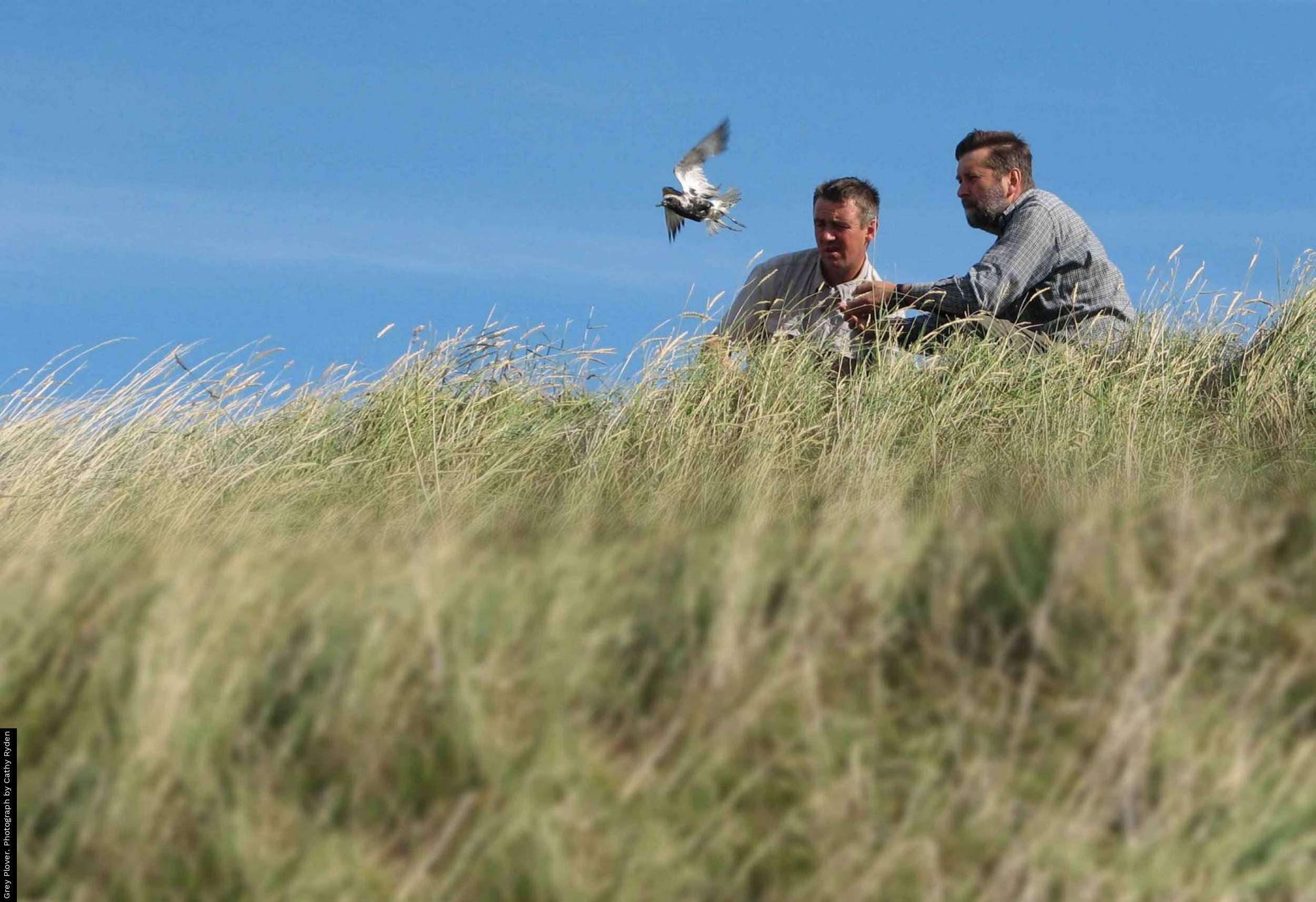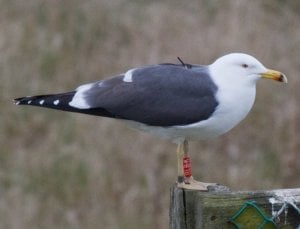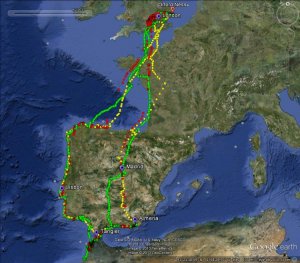After a third winter's tracking, it’s clear our gulls know where they’re going
Tagged Lesser Black-backed Gull
Awaiting the return of birds with expensive tracking devices is always an anxious time for BTO researchers, and never more so than this year when we knew that our state-of-the-art GPS tags had been weathering various storms on our Lesser Black-backed Gulls’ backs through at least two winters and a record-breaking wet summer - a tall order for even the most advanced technology. What’s more, with the extended winter this year, our gulls kept us waiting, returning approximately a fortnight later than last year. Thankfully return they did, with our first bird spotted by Landguard Observatory volunteer Mike Marsh at Orford Ness on 3rd March. In the ensuing weeks, we’ve seen 13 birds come back with functioning tags, including two individuals that were tagged in 2010. There are some data gaps, but overall their tags seem to be bearing up well.
Movements of gull 395 over three consecutive winters. Winter 2010/11 (green), winter
2011/12 (yellow), winter 2012/13 (red). Map courtesy of Google Earth.
In many ways, the most exciting aspect of this year’s return is that we now have time-series data on the migratory behaviour of our birds. This means we can compare an individual bird’s movements between years, as well as contrasting different birds, which, as we discovered last year, can vary a lot in their winter behaviour.
Our most complete dataset belongs to bird 395, tagged in 2010. A quick glance at this bird’s movements shows remarkable consistencies over three winters. Every year this gull migrated across the Bay of Biscay on its outward journey, before hugging the Iberian coast on its way to the Straits of Gibraltar. Likewise, each winter this bird’s primary base was the Spanish port of Almeria, choosing the same rooftops for roosting and loafing and the same feeding sites year in year out. From Almeria, it migrated northwards overland via Madrid’s landfill sites for food. There were also some differences, however. For example, in 2011 this gull remained on the north side of the Straits of Gibraltar, while in 2010 and 2012 it spent some time in the Moroccan city of Tangier and at sites further south.
Similar patterns were seen in other birds, suggesting our gulls certainly know their migration routes well, and set off with particular destinations in mind, although they are flexible enough to respond to local conditions and adapt their behaviour accordingly. Analysing their movements and investigating the reasons underpinning them will be on our agenda for the next few months – watch this space!
Read more about tracking Lesser Black-backed Gulls.








Share this page